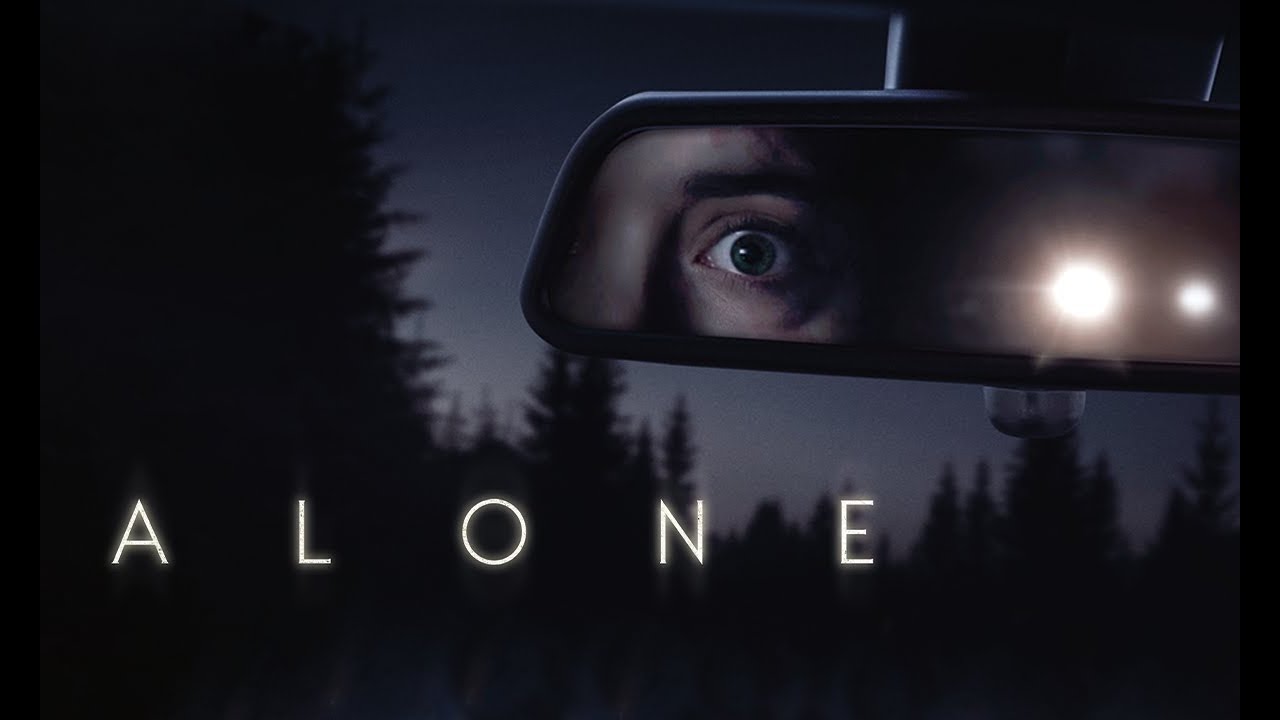Alone 2020

“Alone” (2020) is an intense psychological horror-thriller that takes viewers on a terrifying journey into the depths of isolation, fear, and survival. Directed by John Hyams and written by Mattias Olsson, the film presents a gripping narrative about a young woman’s desperate fight to escape a psychotic predator in the wilderness. With powerful performances and a minimalist yet deeply impactful storyline, “Alone” captivates its audience by delving into the themes of vulnerability, strength, and survival instinct.
The story centers around Jessica, portrayed by Jules Willcox, a woman who is grieving the recent loss of her husband. To cope with the pain and begin a new chapter in her life, she decides to leave her home in search of a fresh start. She embarks on a road trip through the forests of the Pacific Northwest, but her journey takes a horrific turn when she is abducted by a sadistic killer. The killer, a seemingly normal man who hides his sinister motives beneath a calm exterior, traps Jessica in the wilderness. Alone, with no one to rely on but herself, she must find the strength to escape and survive.
At the heart of Alone is the psychological horror that derives not just from the external threat but also from the isolation and vulnerability of the protagonist. The wilderness, while beautiful and serene, becomes a terrifying prison. The silence of nature contrasts sharply with the impending danger, and this contrast builds tension throughout the film. The antagonist, played by Marc Menchaca, is not a supernatural force or a monstrous creature; he is a human being, whose unpredictability and sheer brutality make him all the more frightening. The psychological element of the film comes from Jessica’s fear and how she must deal with her mental and emotional breakdowns as she faces the trauma of being hunted.
The film focuses intensely on Jessica’s emotions and mental state, emphasizing the fear and stress that come with being relentlessly pursued. It is a slow-burn horror, where the terror comes not just from physical threats but also from the mental and emotional toll that the prolonged isolation and the predator’s mind games take on Jessica. Throughout the film, she must overcome not only the threat of the killer but also her own fear, self-doubt, and the feeling of helplessness that comes with being alone in such a desolate place.

One of the most compelling aspects of Alone is its portrayal of Jessica’s fight for survival. From the moment she is kidnapped, the film becomes a tense cat-and-mouse game. As Jessica tries to escape, she uses her wit, resourcefulness, and sheer willpower to outsmart her captor. The film does not present her as a stereotypical “final girl” who merely survives; instead, she is an active participant in her own rescue. The choices she makes, her ability to think on her feet, and her determination to stay alive are what drive the story forward.
The film also explores the theme of trauma and how one reacts to extreme situations. Jessica’s past trauma and the recent loss of her husband are intertwined with her current fight for survival. She has to tap into a deep well of inner strength to confront not just the physical danger but also the psychological scars that are triggered by her abduction. The wilderness, in many ways, becomes a metaphor for her emotional state—a place of both danger and, potentially, healing.
John Hyams’ direction is subtle but effective in building tension. The pacing of the film is deliberately slow at times, allowing the audience to feel the full weight of Jessica’s isolation. The film’s cinematography, especially the shots of the dense forests, vast landscapes, and wide-open spaces, emphasizes the feeling of being trapped in an overwhelming and unforgiving environment. The long shots of the wilderness also convey Jessica’s sense of being small and insignificant in the grand scheme of nature, heightening the tension and fear that permeates the film.
Hyams also makes effective use of sound and silence. The film often relies on the ambient sounds of nature to enhance the sense of isolation, where every crunch of leaves or distant howl can be a reminder of the danger that lurks nearby. The minimalistic score and the absence of unnecessary dialogue also allow the emotional weight of the scenes to land more profoundly.
Marc Menchaca’s portrayal of the antagonist is chilling and adds a complex layer to the story. The killer is not a stereotypical monster but a deeply disturbed individual who has mastered the art of manipulation. His calm demeanor and ability to control the situation at the beginning of the film make him a compelling and terrifying character. What is particularly unsettling is that his motives are not entirely clear, making him unpredictable and, thus, more frightening. As Jessica becomes more aware of the true nature of her captor, the film delves deeper into the psychological horror of not knowing whether she will ever escape or if anyone will come to her rescue.
“Alone” is a masterclass in psychological horror that excels in creating tension through atmosphere, character development, and an emotionally driven plot. It offers a stark, brutal portrayal of one woman’s will to survive in the face of a seemingly insurmountable threat. The film taps into primal fears of isolation, helplessness, and the brutality of human nature. The contrast between the serene beauty of the wilderness and the horrific danger that lurks within it makes for a gripping narrative that keeps viewers on edge from start to finish.
In the end, Alone is not just a survival horror film; it is a study of human resilience, the strength of the human spirit, and the lengths to which one will go when survival is the only option.














